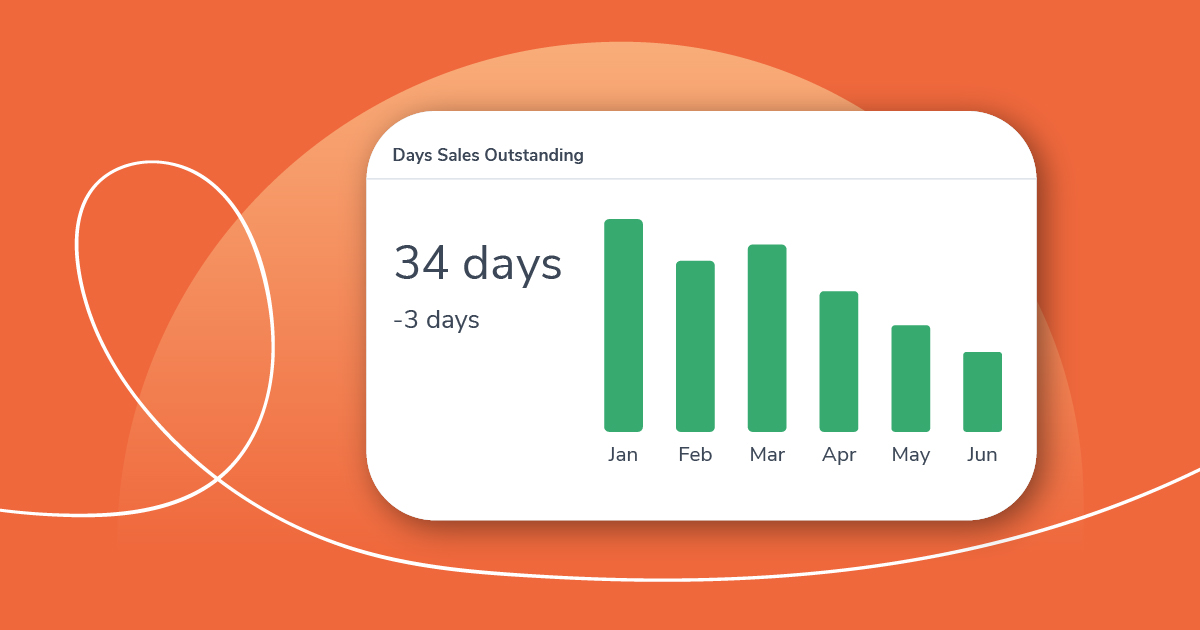Cash flow is an essential factor for the success and sustainability of any business. It refers to the movement of money in and out of a company, including revenue, expenses, and investments. Consistent cash flow allows businesses to cover their day-to-day expenses, maintain operations, and plan for future growth.
Even small mistakes in managing cash flow can have significant impacts on a business, reducing its ability to function efficiently and potentially leading to financial struggles. In this article, we will discuss five common cash flow mistakes that businesses make and how to avoid them.
Mistake 1: Not regularly monitoring cash flow
Businesses generate a lot of data, and it can be overwhelming for small business owners to keep track of everything. However, failing to monitor cash flow regularly can lead to severe problems down the line. By not having a clear understanding of their cash flow situation, businesses may overspend or miss opportunities for growth.
To avoid this mistake, businesses should establish a system for regularly tracking and monitoring their cash flow. Cash flow statements are the foundation of this system, providing a snapshot of the company's current financial state.
These statements should be reviewed at least monthly to identify any potential issues and make necessary adjustments. Accounting tools, such as Xero or QuickBooks, can also be used to automate the process and provide real-time insights into cash flow.
Strategies for improving your monitoring process
There are a range of strategies businesses can implement to improve their cash flow monitoring process. These include:
- Cash flow forecasting: This involves predicting future cash inflows and outflows based on historical data and market trends. By forecasting, businesses can anticipate any potential issues and make proactive decisions.
- Regular budget reviews: Reviewing budgets regularly allows businesses to identify areas where they may be overspending or where they can cut costs to improve cash flow.
- Hiring an accountant: For small businesses, hiring an accountant may seem like an unnecessary expense. However, a professional can provide valuable insights and guidance for managing cash flow effectively.
- Set up automatic notifications: Many accounting tools allow businesses to set up automatic notifications for important cash flow events, such as overdue invoices or low account balances. These can help businesses stay on top of their cash flow situation.
- Schedule regular check-ins with your accounting team: For larger businesses, it may be beneficial to schedule regular meetings with the accounting team to review cash flow and address any potential issues.
Mistake 2: Overestimating future sales
Optimism bias can often lead businesses to overestimate their future sales, resulting in unrealistic cash flow projections. This mistake can be detrimental as businesses may rely on these projected income figures to make critical financial decisions, such as overstocking, investments or loan repayments.
To avoid this error, businesses should base their sales projections on historical data and market trends rather than solely relying on optimism. It is also crucial to regularly review and adjust projections as necessary to reflect any changes in the market or business operations.
Conservative estimates can help businesses avoid overcommitting and ensure that their cash flow remains healthy.
Strategies for creating accurate sales projections
Here are some strategies businesses can use to create more accurate sales projections:
- Market research: Conducting market research can help businesses understand their target audience, current trends, and potential customer demand.
- Track historical data: Looking at past sales data can provide valuable insights into seasonal trends, customer behaviour, and any external factors that may affect sales.
- Consider external factors: Businesses should also consider any external factors that may impact sales, such as economic conditions or changes in the industry.
- Collaborate with the sales team: The sales team is on the front lines of customer interactions and can provide valuable insights into customer demand and potential opportunities.
These strategies can help businesses create more realistic and accurate sales projections, leading to more informed financial decisions.
Mistake 3: Not having a cash reserve
Inevitable expenses, such as unexpected repairs or bills, can quickly disrupt a business's cash flow if there is no reserve to cover them. A lack of a cash reserve can lead to missed payments, late fees, or even the inability to operate.
To avoid this mistake, businesses should aim to have enough cash in their reserve to cover at least three months' worth of expenses. This reserve provides a safety net and allows businesses to continue operations even during lean periods or unexpected events.
An emergency fund is also a crucial component of financial planning, both for businesses and individuals. By having a buffer to cushion unexpected expenses, businesses can avoid relying on credit or loans to cover these costs.
To build a reserve, businesses can set aside a portion of their profits each month until they reach the desired amount. The cash reserve should be kept separate from the operational funds and only used for emergencies.
We've laid out some strategies below that can help businesses build and maintain a cash reserve:
Strategies for building a cash reserve
Here are some strategies businesses can use to build a cash reserve:
- Cut unnecessary expenses: Reviewing expenses and cutting any non-essential items can free up funds to put towards building a reserve.
- Negotiate payment terms: Negotiating with suppliers for extended payment terms can help improve cash flow and provide the opportunity to allocate more money towards building a reserve.
- Consider alternative financing options: Businesses can also explore alternative financing options, such as lines of credit or business loans, to help build their reserve quickly.
- Invest in cash flow management: By implementing strategies for improving cash flow, businesses can free up more funds to put towards building a cash reserve. This may include streamlining processes, reducing inventory levels, or renegotiating payment terms with customers.
By building and maintaining a cash reserve, businesses can have peace of mind knowing they have the means to handle unexpected expenses without disrupting their operations.
Mistake 4: Extending credit without proper checks
Credit checking should be part of the onboarding process for new clients or customers to ensure that businesses are not extending credit to individuals or companies with a history of late payments or defaults.
Extending credit without proper checks can put businesses at risk of bad debt, where they are unable to collect payments owed. This can significantly impact cash flow and hinder a business's ability to operate and grow.
Failing to do proper background checks can also result in delayed or missed payments, affecting the business's cash flow. It can also lead to potential bad debts, where businesses are unable to collect payment for services rendered.
However, there is no reason that credit checks should be limited to new customers. Regularly reviewing the payment history of existing clients can help businesses identify and address potential issues before they become significant problems for cash flow.
Strategies for conducting credit checks
Here are some strategies businesses can use to conduct credit checks effectively:
- Set up a system for ongoing credit checks: Businesses should have a system in place for regularly checking the credit of existing customers. This can be done manually or through automated systems that provide alerts when changes occur.
- Use online resources: Online tools, such as credit bureaus or credit checking software, can provide valuable information about a customer's payment history and creditworthiness.
- Include credit checks in the onboarding process: As mentioned earlier, businesses should conduct credit checks as part of their onboarding process for new clients or customers. This step can help identify potential red flags before extending credit to them.
Putting in place proper checks and processes for credit checking can help businesses mitigate the risk of bad debt, maintain healthy cash flow, and make informed decisions about extending credit to customers.
Mistake 5: Not having an optimized accounts receivable process
Optimisation of accounts receivable is crucial for maintaining a healthy cash flow. If businesses do not have an efficient process in place to track and collect payments from customers, they may experience significant delays or even non-payment.
To avoid this mistake, businesses should clearly outline their payment terms to clients and regularly follow up on outstanding invoices. Using automated reminder systems, such as Chaser, can help streamline this process and ensure that payments are received promptly.
Automation allows AR professionals to focus on high-risk accounts and build stronger relationships with clients, ultimately improving cash flow without adding additional administrative burden.
Having a solid and comprehensive credit control policy in place can also help businesses manage their accounts receivable efficiently. This policy should outline the steps for managing late payments, including when to escalate the issue to a debt collection agency.
Strategies for optimising your accounts receivable process
Here are some strategies businesses can use to optimise their accounts receivable process:
- Clearly communicate payment terms: Businesses should clearly outline their payment terms on invoices and contracts to avoid any confusion or disputes.
- Set up automated reminders: Automated reminder systems, such as Chaser, can be set up to send friendly reminders to clients about upcoming or overdue payments, reducing the need for manual follow-up.
- Follow up on overdue payments promptly: Consistently following up on overdue payments can help speed up the collections process and improve cash flow.
- Implement a credit control policy: A credit control policy outlines the steps businesses will take to collect payments from customers. Having a clear policy in place can help streamline the collections process and reduce the risk of non-payment.
Implementing these strategies can help businesses optimise their accounts receivable process and improve cash flow. By staying on top of payments and having a clear policy in place, businesses can minimise the risk of non-payment and maintain healthy cash flow.
Securing the cash flow your business needs!
Managing cash flow is vital for the success of any business. By avoiding these common mistakes and implementing proactive measures, businesses can secure a stable cash flow and continue to grow and thrive.
Regular monitoring, realistic projections, maintaining a reserve, credit checks, and optimising accounts receivable processes are all crucial components of effectively managing cash flow.
Remember that small changes in daily operations can lead to significant improvements in cash flow and, ultimately, the success of your business.
For more strategies on how to improve cash flow and grow your business, check out the Chaser blog. To learn more about how Chaser can help automate your AR process and improve cash flow, book a demo with one of our experts or start your no-obligation 14-day free trial today!




